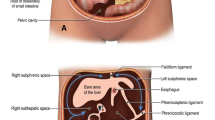Abstract
Wireless capsule endoscopy represents an extraordinary technical innovation in diagnostic gastrointestinal endoscopy. As in adult patients, it opens new horizons that permit an accurate and noninvasive approach to identifying occult lesions in the small bowel in children and adolescents. A limitation in the pediatric age group is the size of the capsule, precluding its use in infants and small toddlers. In children unable to swallow the capsule, “front loading” the gastroscope to introduce it into the duodenum is a suitable alternative approach. Capsule endoscopy is highly useful to evaluate for inflammatory changes in patients suspected to have small bowel Crohn’s disease in whom conventional imaging failed to confirm the diagnosis. It is now the method of first choice to assess for small bowel polyps or tumors, to find a source of blood loss in obscure intestinal bleeding, and for undiagnosed malabsorptive conditions such as intestinal lymphangiectasia. Capsule retention is the one major potential adverse effect of capsule endoscopy. In patients suspected to have a small bowel stenosis, consideration should be given to using the patency capsule prior to using the real videocapsule so as to decrease the risk of capsule retention.
Similar content being viewed by others
References and Recommended Reading
Seidman EG, Sant’Anna AM, Dirks MH:Potential applications of wireless capsule endoscopy in the pediatric age group.Gastrointest Endosc Clin N Am 2004,14:207–218.
Waye JD:Small-bowel endoscopy.Endoscopy 2003,35:15–21.
Yamamoto H, Kita H, Sunada K, et al.:Clinical out-comes of double-balloon endoscopy for the diagnosis and treatment of small-intestinal diseases.Clin Gastroenterol Hepatol 2004,2:1010–1016.
Iddan G, Meron G, Glukhovsky A, Swain P:Wireless capsule endoscopy.Nature 2000,405:417.
Costamagna G, Shah SK, Riccioni ME, et al.:A prospective trial comparing small bowel radiographs and video capsule endoscopy for suspected small bowel disease.Gastroenterology 2002,123:999–1005.
Ell C, Remke S, May A, et al:The first prospective controlled trial comparing wireless capsule endoscopy with push enteroscopy in chronic gastrointestinal bleeding.Endoscopy 2002,34:685–689.
Pennazio M, Santucci R, Rondonotti E, et al.:Outcome of patients with obscure gastrointestinal bleeding after capsule endoscopy: report of 100 consecutive cases.Gastroenterology 2004,126:643–653.
Triester SL, Leighton JA, Leontiadis GI, et al.:Ameta-analysis of capsule endoscopy (CE) compared to other modalities in patients with non-stricturing small bowel Crohn disease.Am J Gastroenterol 2006,101:954–964.
Petroniene R, Dubenco E, Baker JP, et al.:Given capsule endoscopy in celiac disease: evaluation of diagnostic accuracy and interobserver variation.Am J Gastroenterol 2005,100:685–694.
de Mascarenhas-Saraiva MN, da Silva Araujo Lopes LM:Small-bowel tumors diagnosed by wireless capsule endoscopy: report of five cases.Endoscopy 2003,35:865–868.
Guilhon de Araujo Sant’Anna AM, Dubois J, Miron MJ, Seidman EG:Wireless capsule endoscopy for obscure small bowel disorders: final results of the first pediatrie controlled trial.Clin Gastroenterol Hepatol 2005,3:264–270.
Arguelles-Arias F, Caunedo A, Romero J, et al.:The value of capsule endoscopy in pediatrie patients with a suspicion of Crohn’s disease.Endoscopy 2004,36:869–873.
Barkay O, Moshkowitz M, Reif S:Crohn’s disease diagnosed by wireless capsule endoscopy in adolescents with abdominal pain, protein-losing enteropathy, anemia and negative endoscopie and radiologie findings.Isr Med Assoc J 2005,7:216–218.
Maiden L, Thjodleifsson B, Theodors A, et al.:A quantitative analysis of NSAID-induced small bowel pathology by capsule enteroscopy.Gastroenterology 2005,128:1172–1178.
Goldstein JL, Eisen GM, Lewis B, et al.:Video capsule endoscopy to prospectively assess small bowel injury with celecoxib, naproxen plus omeprazole, and placebo.Clin Gastroenterol Hepatol 2005,3:133–141.
Mata A, Bordas JM, Feu F, et al.:Wireless capsule endoscopy in patients with obscure gastrointestinal bleeding: a comparative study with push enteroscopy.Aliment Pharmacol Ther 2004,20:189–194.
Soares J, Lopes L, Vilas Boas G, Pinho C:Wireless capsule endoscopy for evaluation of phenotypic expression of small-bowel polyps in patients with PeutzJeghers syndrome and in symptomatic first-degree relatives.Endoscopy 2004,36:1060–1066.
Caspari R, von Falkenhausen M, Krautmacher C, et al.:Comparison of capsule endoscopy and magnetic resonance imaging for the detection of polyps of the small intestine in patients with familial adenomatous polyposis or with Peutz-Jeghers’ syndrome.Endoscopy 2004,36:1054–1059.
Schulmann K, Hollerbach S, Kraus K, et al.:Feasibility and diagnostic utility of video capsule endoscopy for the detection of small bowel polyps in patients with hereditary polyposis syndromes.Am J Gastroenterol 2005,100:27–37.
Pennazio M, Eisen G, Goldfarb N:ICCE consensus for obscure intestinal bleeding.Endoscopy 2005,37:1046–1050.
De Bona M, Bellumat A, De Boni M:Capsule endoscopy for the diagnosis and follow-up of blue rubber bleb nevus syndrome.Dig Liver Dis 2005,37:451–453.
Murray JA, Brogan D, Van dyke C, et al.:Mapping the extent of untreated celiac disease with capsule enteroscopy [abstract].Gastrointest Endosc 2004,59:AB101.
Cellier C, Green PH, Collin P, Murray J:ICCE consensus for celiac disease.Endoscopy 2005,37:1055–1059.
Mihaly F, Nemeth A, Zagoni T, et al.:Gastrointestinal manifestations of common variable immunodeficiency diagnosed by video- and capsule endoscopy.Endoscopy 2005,37:603–604.
Yakoub-Agha I, Maunoury V, Wacrenier A, et al.:Impact of small bowel exploration using video-capsule endoscopy in the management of acute gastrointestinal graft-versus-host disease.Transplantation 2005,79:1767.
Barth BA, Donovan K, Fox VL:Endoscopie placement of the capsule endoscope in children.Gastrointest Endosc 2004,60:818–821.
Author information
Authors and Affiliations
Corresponding author
Rights and permissions
About this article
Cite this article
Seidman, E.G., Dirks, M.H. Capsule endoscopy in the pediatric patient. Curr Treat Options Gastro 9, 416–422 (2006). https://doi.org/10.1007/BF02738531
Issue Date:
DOI: https://doi.org/10.1007/BF02738531




